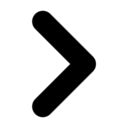Clicks create journeys. A digital marketing strategy must include every site where your target audience interacts.
Skip the line and grab attention instantly with efficient, data-driven online ads.
We don't just manage; we tell stories that turn heads, win hearts, and leave a lasting digital echo.
Say goodbye to the spam folder and hello to a personalized, irresistible connection with your customers.
We design and develop high-performing websites that speak straight to your target audience.
Welcome to the MD Brain Dump – where we share stories, insights, tips, and all the digital wisdom to keep you ahead of the curve.

We design beautiful journeys that convert users into customers.


You'll rank higher, bringing more quality leads, more sales and ultimately, more revenue.

We take a close look at your site and report actionable solutions to boost search engine visibility.
We do all the necessary tweaks for outstanding SEO, from web architecture to lightning-fast load times.
Be hyper local. Target a city or even a neighborhood that you'll dominate.
No area too big either. We can position your site across multiple countries and languages.
We sprinkle some SEO magic by adding irresistible keywords and valuable content.
We build a strong link network - internally so users navigate your site from A to Z and externally for powerful backlinks.
Software company, a software company from Chile, approached us for an SEO consultancy. By implementing technical SEO, restructuring their site and adding relevant keywords, we increased their organic traffic by 274.34% in one year, resulting in a rise of 1,707% in conversions and organic leads.
Our processes come with the joy of systematic testing, open development, and extraordinary attention to detail.
In a field as competitive as the Internet, making your website stand out from the millions out there would seem to be a very complicated task...
Linkbuilding is the art, or science, of getting natural external links to your website. Each link is taken by Google as a 'vote of confidence'...
 What is SEO?
What is SEO? SEO stands for Search Engine Optimization, a must-do practice for any business in the digital age. It involves optimizing your online presence to attract a swarm of high-quality traffic straight from search engines' organic search results.
 Why is SEO important?
Why is SEO important? Picture this: higher rankings, increased visibility, and a flood of eager visitors in your website. That's the power of SEO. It drives your website to the top of search engine results pages bringing more traffic to your site, and ultimately increase revenue.
 Should my company invest in SEO?
Should my company invest in SEO? Absolutely. Investing in SEO is essential for any business looking to establish a strong online presence and reach a wider audience. In today's competitive landscape, an optimized SEO strategy will rise your site to the top leaving competition in the dust.
 What does a SEO agency do?
What does a SEO agency do? An SEO agency is the partner you need to attract new visitors to your site and propel your business to new heights. They provide a range of services, including keyword research, on-page optimization, link building, content creation, and analytics. SEO agencies work closely with their clients to understand their business goals and develop a customized SEO strategy to achieve those goals.
 How long does it take to see results from SEO?
How long does it take to see results from SEO? Not long! You'll see the first exciting results after only one month and these juicy metrics will keep getting better as we measure and adjust our SEO strategy over time.
 Why is nearshore SEO my best option?
Why is nearshore SEO my best option? Nearshore SEO is the greatest option for businesses looking for cost-effective, high-quality SEO services. This is because nearshore agencies are often located in countries with similar cultures and languages, making communication and collaboration easier, while still offering competitive pricing. Additionally, time zone proximity can allow for more efficient communication and faster turn-around times.
We can help you, we know how to do it.
We’ll get back to you soon.

Si quieres que seamos tu agencia de marketing digital nos encantaría escucharte.
We use cookies to ensure that we give the best experience to the user on our website. If you continue using this site, we will assume that you agree.
